Shiba may refer to:
- Shiba Inu, a breed of dog
- Shiba clan, Japanese clan originating in the Sengoku period
- Shiba Inu (cryptocurrency), a decentralized cryptocurrency
Shiba may refer to:
Fictional characters:

Samurai were the hereditary military nobility and officer caste of medieval and early-modern Japan from the late 12th century until their abolition in the 1870s during the Meiji era. They were the well-paid retainers of the daimyo, the great feudal landholders. They had high prestige and special privileges.

The Shiba Inu is a breed of hunting dog from Japan. A small-to-medium breed, it is the smallest of the six original and distinct spitz breeds of dog native to Japan. Its name literally translates to "brushwood dog", as it is used to flush game.
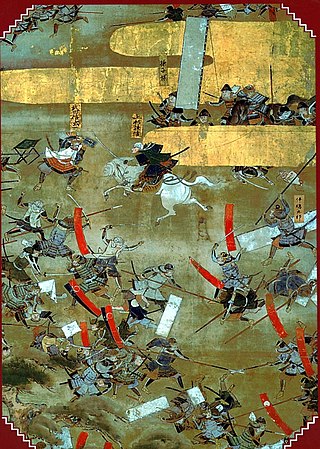
The Sengoku period is the period in Japanese history in which civil wars and social upheavals took place almost continuously in the 15th and 16th centuries. Though the Ōnin War (1467) is generally chosen as the Sengoku period's start date, there are many competing historiographies for its end date, ranging from 1568, the date of Oda Nobunaga's march on Kyoto, to the suppression of the Shimabara Rebellion in 1638, deep into what is traditionally considered the Edo period. Regardless of the dates chosen, the Sengoku period overlaps substantially with the Muromachi period (1336–1573).
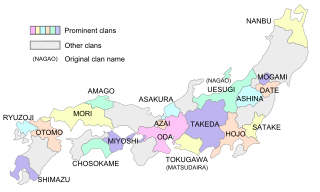
Daimyo were powerful Japanese magnates, feudal lords who, from the 10th century to the early Meiji period in the middle 19th century, ruled most of Japan from their vast, hereditary land holdings. They were subordinate to the shogun and nominally to the emperor and the kuge. In the term, dai (大) means 'large', and myō stands for myōden (名田), meaning 'private land'.

Takeda Shingen was daimyo of Kai Province during the Sengoku period of Japan. Known as the "Tiger of Kai", he was one of the most powerful daimyo with exceptional military prestige in the late stage of the Sengoku period. Shingen was based in a poor area with little arable land and no sea, but became one of Japan's leading daimyo. His skills are highly evaluated along with Mōri Motonari.

Aizu (会津) is the westernmost of the three regions of Fukushima Prefecture, Japan, the other two regions being Nakadōri in the central area of the prefecture and Hamadōri in the east. As of October 1, 2010, it had a population of 291,838. The principal city of the area is Aizuwakamatsu.
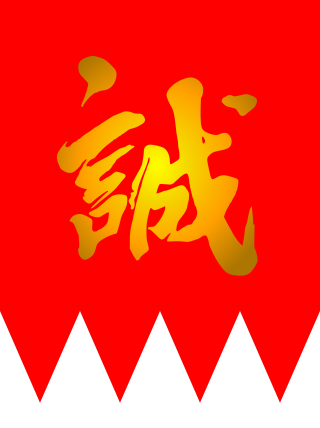
The Shinsengumi was a small elite group of swordsmen that was organized by commoners and low rank samurai, commissioned by the bakufu during Japan's Bakumatsu period in 1863. It was active until 1869. It was founded to protect the shogunate representatives in Kyoto at a time when a controversial imperial edict to exclude foreign trade from Japan had been made and the Chōshū clan had been forced from the imperial court. They gained considerable fame in the Ikedaya incident and the August 18 coup events, among others. The men were drawn from the sword schools of Edo.

Okita Sōji was the captain of the first unit of the Shinsengumi, a special police force in Kyoto during the late shogunate period. He was one of the best swordsmen of the Shinsengumi.

Thomas Blake Glover was a Scottish merchant in the Bakumatsu and Meiji period in Japan.
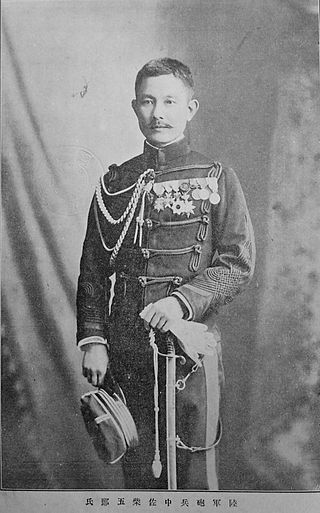
Shiba Gorō was a samurai of Aizu Domain and later a career officer and general in the Meiji period Imperial Japanese Army.
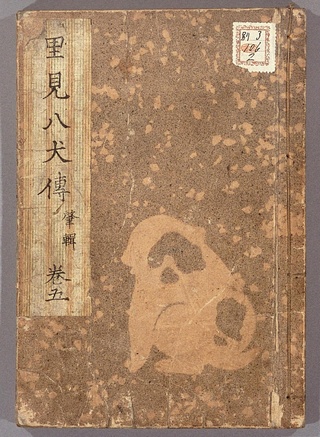
Nansō Satomi Hakkenden is a Japanese epic novel (yomihon) written and published over twenty-eight years (1814–42) in the Edo period, by Kyokutei Bakin. Set in the Muromachi period, the story follows eight fictional warriors, connected spiritually but born into different families throughout the Kantō region, coming together and fighting as vassals of the Satomi clan; as well as numerous side plots. Bakin researched about the Satomi clan by referring to war tales about the Satomi clan and the Hōjō clan such as Satomiki (里見記), Satomi Kyudaiki (里見九代記) and Hojo Godaiki, and completed the story line of Nansō Satomi Hakkenden by referring to them.

The Hachisuka clan are descendants of Emperor Seiwa (850-880) of Japan and are a branch of the Ashikaga clan through the Shiba clan of the Minamoto clan.
Doge or DOGE may refer to:

Kiyosu Castle is a Japanese castle located in Kiyosu, eastern Aichi Prefecture, Japan. It is noted for its association with the rise to power of the Sengoku period warlord, Oda Nobunaga. The kanji in the name of the castle was written as 清須城. The current partial reconstruction dates to 1989 and was built as a centennial celebration for the modern-day city of Kiyosu.

The Kyū Shiba Rikyū Garden (旧芝離宮恩賜庭園), also known as Kyū Shiba Rikyū Onshi Teien is a public garden and former imperial garden in Minato ward, Tokyo, Japan. The garden is one of four surviving Edo-period clan gardens in Tokyo, the others being Koishikawa Kōraku-en, Rikugi-en, and Hama Rikyu Garden. Kyū Shiba Rikyū is often regarded as the most beautifully designed garden in Tokyo, and was once called the "most beautiful" scene in Japan.
Ogasawara is a Japanese surname. It may also refer to:

Doge is an Internet meme that became popular in 2013. The meme typically consists of a picture of Kabosu, a Shiba Inu dog, accompanied by multicolored text in Comic Sans font in the foreground. The text, representing a kind of internal monologue, is deliberately written in a form of broken English.
Sōma is a city in Fukushima Prefecture, Japan.
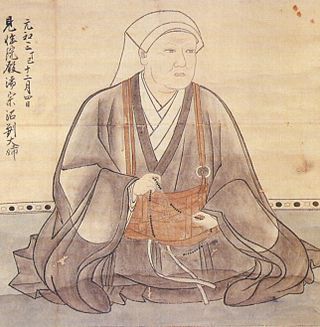
Yamauchi Chiyo (山内千代) or Kenshōin was a Japanese noble lady from the Sengoku period to the early of the Edo period. Known in history for her dedication and devotion to her family, she was vitally important to the success of the Yamauchi clan, a samurai clan under the leadership of her husband, Yamauchi Kazutoyo. It is said that she was responsible for stabilizing the predominance of the Yamauchi clan, and the formation of the Tosa domain.

Shiba Inu token is a decentralized cryptocurrency created in August 2020 by an anonymous person or group known as "Ryoshi". It is named after the Shiba Inu (柴犬), a Japanese breed of dog originating in the Chūbu region, the same breed that is depicted in Dogecoin's symbol, itself originally a satirical cryptocurrency based on the Doge meme. Shiba Inu has been characterized as a "meme coin" and a pump-and-dump scheme. There have also been concerns about the concentration of the coin with a single "whale" wallet controlling billions of dollars' worth of the token, and frenzied buying by retail investors motivated by fear of missing out (FOMO).